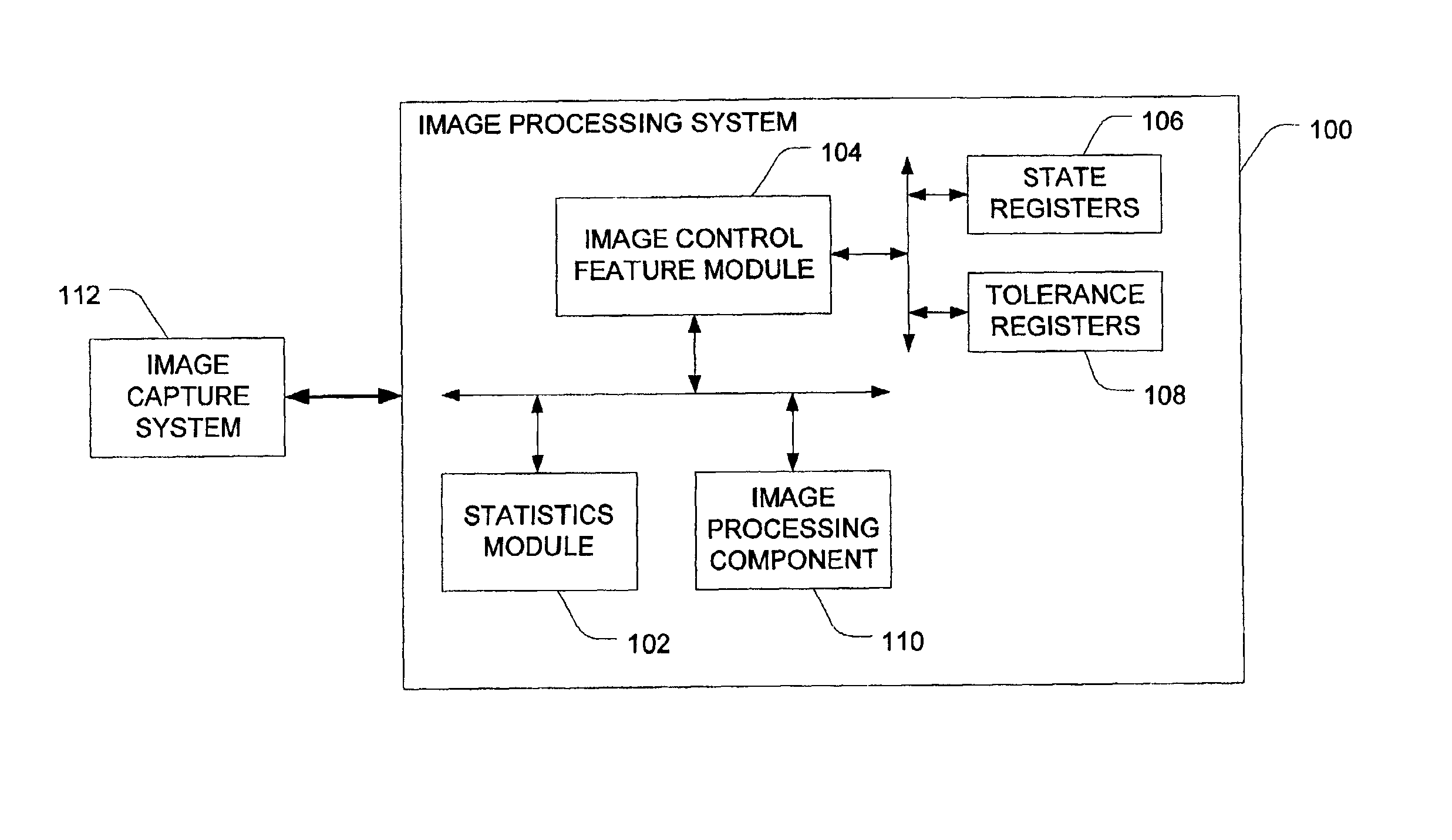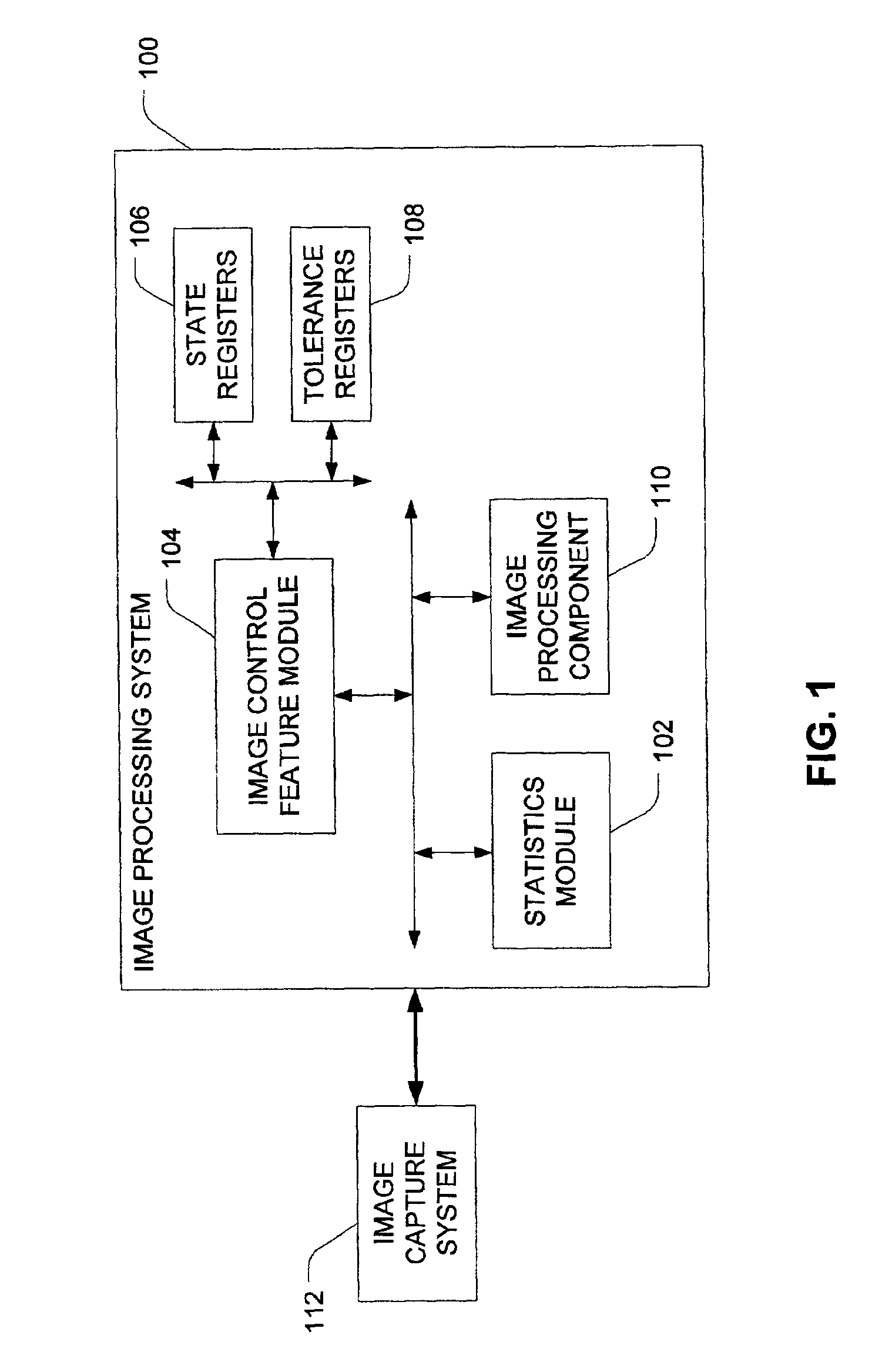Hysteresis in image processing algorithms
a technology of image processing and image capture, applied in the field of image capture systems, can solve the problems of hysteresis in image processing algorithms, algorithm small adjustment, and affecting the correct adjustment of these algorithms, and achieve the effect of reducing or minimizing interframe nois
- Summary
- Abstract
- Description
- Claims
- Application Information
AI Technical Summary
Benefits of technology
Problems solved by technology
Method used
Image
Examples
Embodiment Construction
[0019]An image processing system, according to an embodiment of the present invention, incorporates hysteresis into image processing algorithms to reduce or minimize interframe noise in a sequence of two or more video frames. Image processing algorithms for adjusting image control features, such as, automatic exposure (“AE”), automatic white balance (“AWB”), and tonemapping, are well known in the art and, thus, will not be further described in detail herein. Also well known in the art is that adjusting the image control feature in a video frame introduces interframe noise in the video frame sequence. The present disclosure is directed toward systems and corresponding methods that incorporate hysteresis into the application of image processing algorithms to reduce or minimize interframe noise in a sequence of video frames. Generally, incorporating hysteresis in image processing algorithms reduces the amount of interframe noise that is introduced in the video frame sequence because hy...
PUM
 Login to View More
Login to View More Abstract
Description
Claims
Application Information
 Login to View More
Login to View More - R&D
- Intellectual Property
- Life Sciences
- Materials
- Tech Scout
- Unparalleled Data Quality
- Higher Quality Content
- 60% Fewer Hallucinations
Browse by: Latest US Patents, China's latest patents, Technical Efficacy Thesaurus, Application Domain, Technology Topic, Popular Technical Reports.
© 2025 PatSnap. All rights reserved.Legal|Privacy policy|Modern Slavery Act Transparency Statement|Sitemap|About US| Contact US: help@patsnap.com



